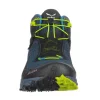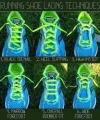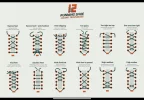gerardcarey
Veteran Member
- Time of past OR future Camino
- CFx2, CPx1
Considering the probability that footware is the most important piece of equipment a pilgrim takes, I would submit a video demonstrating the use of the perhaps not-so-well known 'Heel lock' lacing technique.
It utilises the two top sets of eyelets.
As the name suggests its purpose is to lock the heel into the back of the shoe thereby preventing the foot from moving about, and the toes from banging into the front of the shoe.
I find it works like a charm independent of the lacing technique used on the lower eyelets.
NB
If you don't have the extra offset eyelet at the very top, just use it on the top two sets of eyelets you do have.
My preferred lower lacing system is the Lydiard /Ladder /Bar lacing technique. Its purpose is to decrease the amount of pressure exerted on the top of the foot.
Regards Gerard
It utilises the two top sets of eyelets.
As the name suggests its purpose is to lock the heel into the back of the shoe thereby preventing the foot from moving about, and the toes from banging into the front of the shoe.
I find it works like a charm independent of the lacing technique used on the lower eyelets.
NB
If you don't have the extra offset eyelet at the very top, just use it on the top two sets of eyelets you do have.
My preferred lower lacing system is the Lydiard /Ladder /Bar lacing technique. Its purpose is to decrease the amount of pressure exerted on the top of the foot.
Regards Gerard
Last edited:





















